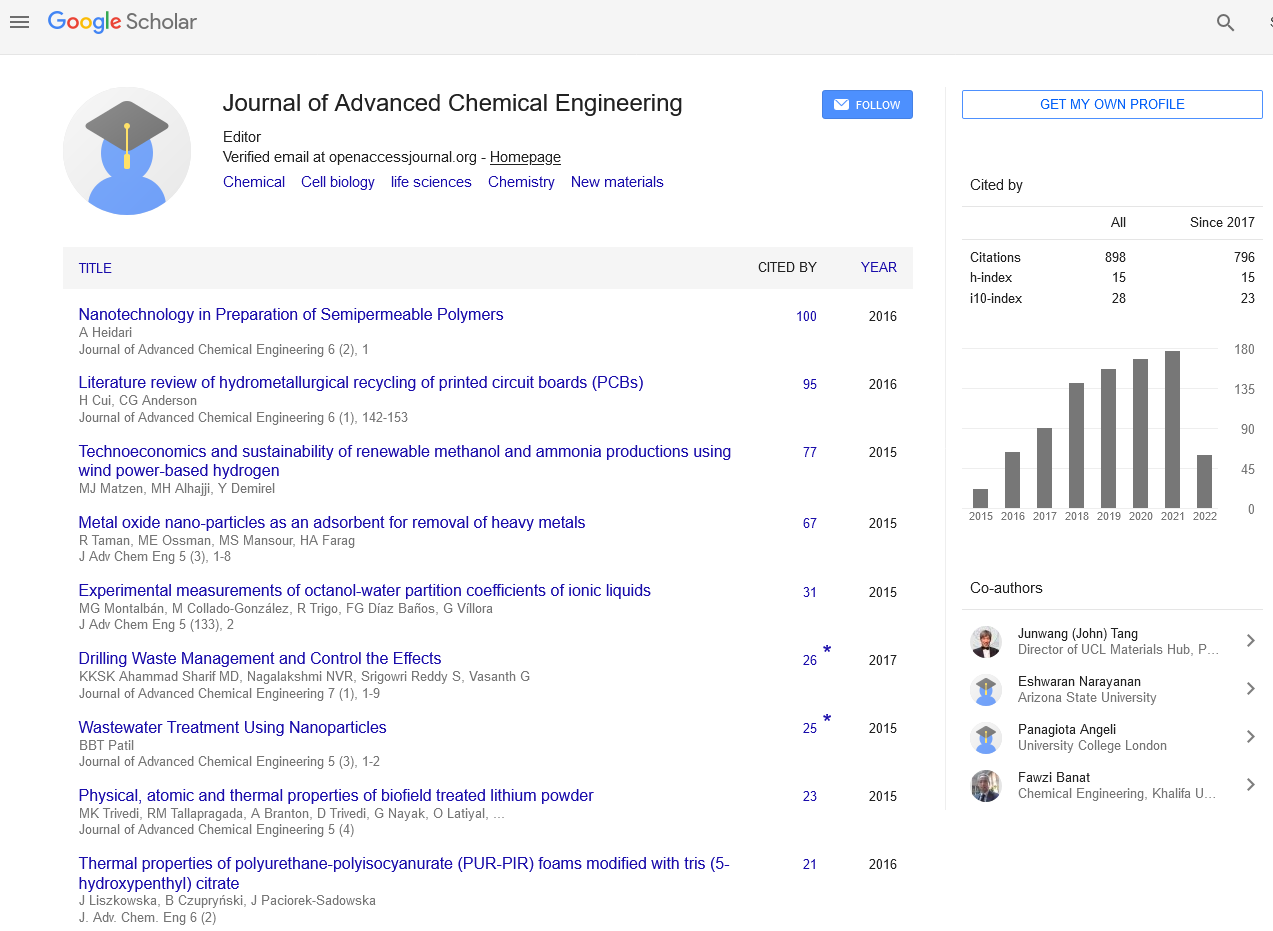Indexed In
- Open J Gate
- Genamics JournalSeek
- Smithers Rapra
- RefSeek
- Directory of Research Journal Indexing (DRJI)
- Hamdard University
- EBSCO A-Z
- OCLC- WorldCat
- Scholarsteer
- Publons
- Geneva Foundation for Medical Education and Research
- Google Scholar
Useful Links
Share This Page
Journal Flyer

Open Access Journals
- Agri and Aquaculture
- Biochemistry
- Bioinformatics & Systems Biology
- Business & Management
- Chemistry
- Clinical Sciences
- Engineering
- Food & Nutrition
- General Science
- Genetics & Molecular Biology
- Immunology & Microbiology
- Medical Sciences
- Neuroscience & Psychology
- Nursing & Health Care
- Pharmaceutical Sciences
Abstract
Adsorption of Reactive Dyes from Textile Wastewater Using Corn Stalk Activated Carbon
Robel Legese Meko
Extensive use of synthetic dyes in textile industry has created a major pollution problem. Among various treatments, adsorption has been considered as a better process due to its effectiveness of removing color from wastewater. In this present work, the efficiency of activated carbon prepared from corn stalk for removal of reactive dye from textile wastewater was studied. Corn stalk was chemically activated with KOH, followed by carbonizing in a muffle furnace. The carbonized corn stalk was characterized by SEM and FTIR spectroscopy. Adsorption of three reactive dyes were carried out by preparing dye samples in laboratory and taking dye wastewater from BDTSC. Adsorption was carried out under the control of three different factors namely contact time, adsorbent dosage and pH. Optimum time, pH and adsorbent dosage for adsorption process were found to be 60 minutes, 3.8 pH and 4 g/L respectively. Using those optimum operating parameters, the adsorption capacity of prepared activated carbon for Reactive yellow-145, Reactive red-2, Reactive blue-19 and wastewater taken from BDTSC was 96.9%, 95.5%, 97.1% and 88% respectively. Langmuir and Freundlich adsorption isotherm models were used to simulate the equilibrium data for the adsorption process. The result indicates that the adsorption process best fits with Freundlich isotherm. The produce activated carbon was also shown a reduction of BOD, COD, TDS, TSS and turbidity.
Published Date: 2021-02-26; Received Date: 2021-02-05


